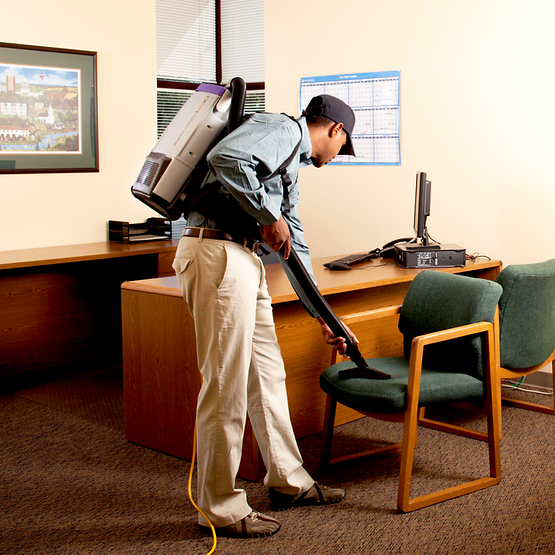In any professional environment, cleanliness is more than just a matter of appearance—it's a reflection of your business values, employee well-being, and overall productivity. While many companies invest in regular floor cleaning and window washing, one critical area is often overlooked: commercial furniture cleaning.
From fabric chairs and conference room seating to breakroom couches and office partitions, commercial furniture collects dust, allergens, and germs just like any other surface. Over time, this accumulation not only degrades the look and lifespan of your furniture but can also negatively affect employee health and client impressions. This guide explores why commercial furniture cleaning is essential, how it's done, and how often it should be scheduled to maintain a clean and professional workspace.
Why Commercial Furniture Cleaning Matters
1. Creates a Positive First Impression
Your office furniture plays a key role in shaping how clients, partners, and even new hires perceive your business. Stained chairs, dusty couches, or worn-out partitions send a message that cleanliness and professionalism may not be a top priority. On the other hand, well-maintained furniture communicates attention to detail and care for your business environment.
2. Supports Employee Health and Productivity
Office furniture can harbor allergens like dust mites, pollen, and mold spores, as well as bacteria and viruses from frequent human contact. Regular commercial furniture cleaning helps create a healthier workspace by eliminating these contaminants, reducing the risk of allergies, respiratory problems, and illness outbreaks. A clean, fresh office environment can also boost employee morale and focus.
3. Extends Furniture Lifespan
Commercial-grade furniture is a significant investment. However, dirt and grime trapped in upholstery or leather can cause premature wear and tear. Deep cleaning preserves fabric color, removes corrosive particles, and prevents long-term damage. By extending the life of your furniture, you're also reducing replacement costs and maintaining a consistent office aesthetic.
Common Types of Commercial Furniture That Require Cleaning
-
Office chairs – High-contact and often upholstered, these chairs can accumulate sweat, dust, and stains.
-
Conference room seating – Used by clients and employees alike, this furniture needs to stay presentable.
-
Reception and lobby furniture – The first thing guests see, often upholstered or leather.
-
Breakroom and lunch area furniture – More susceptible to food and beverage spills.
-
Cubicle panels and partitions – Fabric panels trap dust and bacteria but are often forgotten in routine cleaning.
-
Waiting room couches and chairs – Frequent use means high exposure to germs and dirt.
Each of these furniture types requires a specialized approach to commercial furniture cleaning, depending on the material and usage frequency.
The Professional Cleaning Process: What to Expect
A professional commercial furniture cleaning service typically includes the following steps:
1. Inspection and Assessment
The cleaning team will evaluate the condition, material, and manufacturer recommendations for each furniture item. They identify stains, wear areas, and materials (e.g., leather, synthetic, fabric) to determine the appropriate cleaning method.
2. Pre-Treatment
Stains and heavy-soil areas are treated with specific pre-cleaning agents. These solutions help break down oils, ink, food residues, and other stubborn contaminants.
3. Steam or Dry Cleaning
Depending on the material, professionals will use either steam cleaning (ideal for fabrics) or dry cleaning (for moisture-sensitive materials). Steam cleaning uses hot water extraction to remove deep-set grime, while dry cleaning uses minimal moisture and specialized solvents.
4. Disinfection
Many services include a sanitization step, especially important in the post-COVID era. Antimicrobial treatments may be applied to high-touch surfaces to kill bacteria and viruses.
5. Deodorizing
Commercial furniture can absorb odors from food, body oils, and the surrounding environment. Professional deodorizing restores a fresh, neutral scent to your workspace.
6. Drying and Final Inspection
Quick-drying equipment ensures furniture is ready for use within a few hours. The cleaning crew will perform a final inspection to ensure quality and client satisfaction.
Frequency: How Often Should You Schedule Commercial Furniture Cleaning?
There’s no one-size-fits-all schedule, but here are some general guidelines:
-
High-traffic areas (lobbies, breakrooms, reception): Every 2–3 months
-
Conference rooms and shared seating: Every 4–6 months
-
Private offices and desk chairs: Every 6–12 months
-
Cubicle panels and partitions: Once or twice per year
Factors such as the type of business, volume of foot traffic, and presence of pets or food can influence the frequency of commercial furniture cleaning.
Choosing the Right Commercial Furniture Cleaning Service
When selecting a provider, look for:
-
Experience with commercial environments – Not all cleaning companies are equipped for office-scale jobs.
-
Use of non-toxic, eco-friendly products – Safer for employees and better for the environment.
-
Flexible scheduling – Cleaning during off-hours or weekends to avoid disruptions.
-
Transparent pricing and clear communication – Ensure no hidden fees and a detailed scope of work.
Ask for references or case studies to understand the company’s experience and reliability.
DIY vs. Professional Cleaning: Is It Worth It?
While in-house cleaning staff can handle surface wiping or vacuuming, they generally lack the equipment and training for deep upholstery care. Over-the-counter products may clean temporarily but can damage furniture if not used properly. Professional commercial furniture cleaning ensures thorough, safe, and effective treatment—protecting your investment and maintaining professional standards.
Final Thoughts
Clean, well-maintained furniture plays a crucial role in the success of any office or commercial space. Beyond aesthetics, regular commercial furniture cleaning contributes to employee health, extends the life of costly assets, and creates a lasting positive impression on everyone who walks through your doors.

